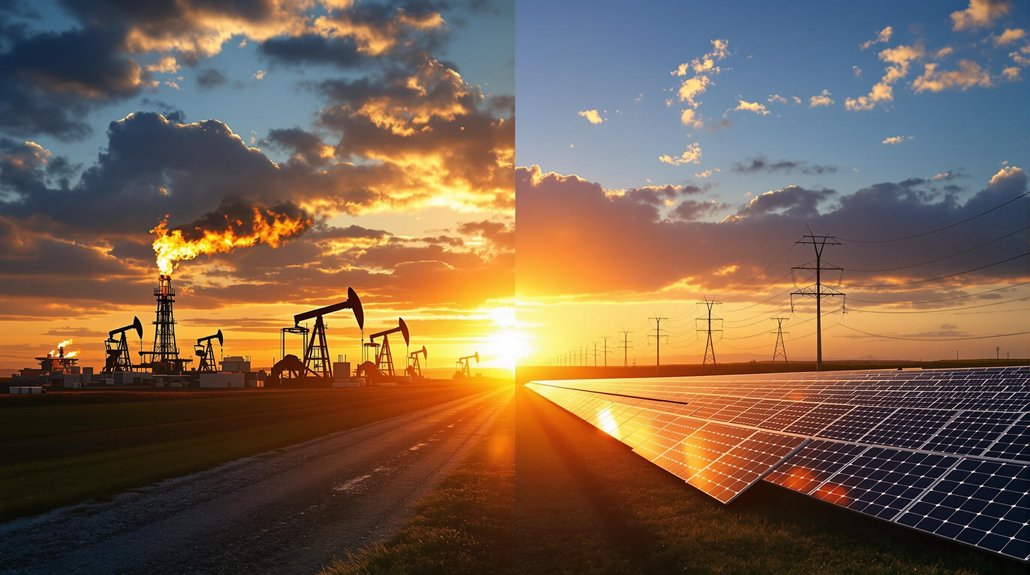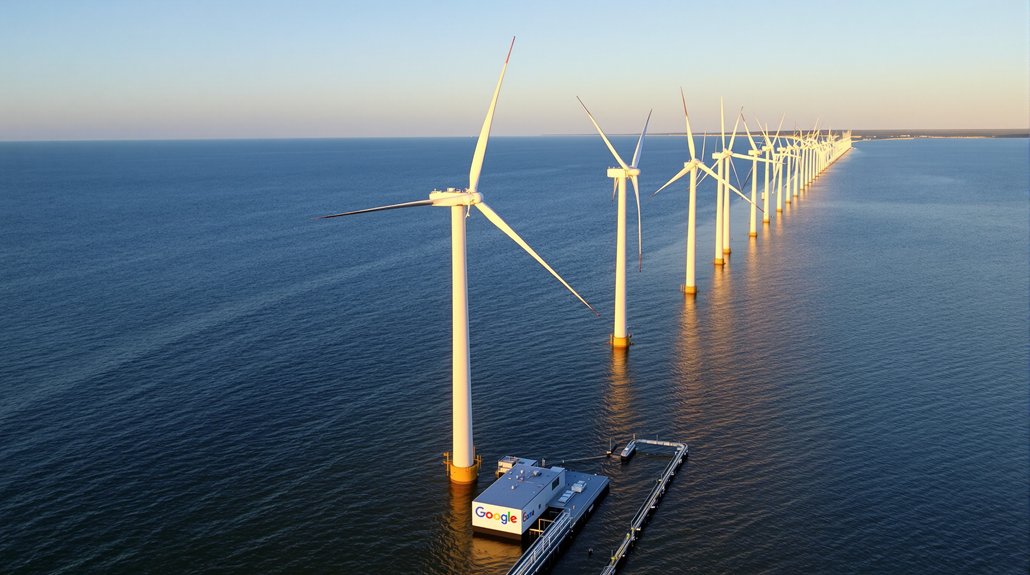The Trump administration faces an energy paradox. Record oil production at 12.4 million barrels daily coexists with aggressive clean energy goals. Officials promote America as an “indispensable energy partner” while simultaneously investing billions in renewables. Industry leaders complain about mixed signals—approving the Willow project while pushing carbon-free electricity by 2035. It’s policy whiplash, folks. The Inflation Reduction Act perfectly encapsulates this contradiction, mandating both fossil fuel leases and renewable development. The full story gets even messier.
Three competing realities define Energy Secretary Jennifer Granholm‘s current predicament. She’s cheering record-breaking U.S. oil production while simultaneously plotting its eventual demise. Talk about an awkward position. The Biden administration is pushing fossil fuels with one hand and clean energy with the other—a balancing act that leaves everyone slightly annoyed.
The numbers tell the story. America’s pumping out 12.4 million barrels of crude daily in 2023—an all-time high. Granholm has enthusiastically praised U.S. oil and gas exports during the Ukraine war, positioning America as an “indispensable energy partner” to allies. Meanwhile, the administration green-lit the controversial Willow oil project in Alaska. Fossil fuels aren’t exactly being abandoned.
But wait. The previous administration wanted a carbon-free power sector by 2035 and a net-zero economy by midcentury. Rick Perry’s memo emphasized the need for baseload power resources to maintain grid reliability amid the renewable energy transition. The Inflation Reduction Act is pumping billions into renewable development. DOE’s investing heavily in next-generation clean technologies. Solar technologies, with minimal maintenance costs compared to conventional energy sources, represent a particularly attractive long-term investment. It’s like watching someone order both a salad and a triple cheeseburger, insisting they’re on a diet.
Industry leaders aren’t impressed by the mixed signals. The American Petroleum Institute’s CEO called Willow’s approval a “gating question.” Senator Manchin is fuming about delayed offshore drilling plans. The U.S. Chamber of Commerce wants specifics on federal leasing. The relationship? “Tentative” at best.
Regulations further complicate things. The Inflation Reduction Act actually mandates oil and gas lease sales. Renewable energy leases are tied to fossil fuel leases. This policy contradiction exemplifies what some economists call the green paradox, where environmental policies inadvertently accelerate fossil fuel extraction. It’s a mess of contradictions that has the Interior Department tangled in red tape.
Globally, U.S. energy exports are booming amid geopolitical chaos. European allies desperately need American energy with Russian supplies compromised. America’s become an energy powerhouse—just as it’s trying to shift away from the very fuels making that possible.
The economics don’t simplify matters. Fossil fuels drive export growth while renewables create jobs and get cheaper by the day. It’s energy policy whiplash, and nobody’s neck feels good.








